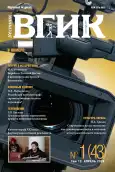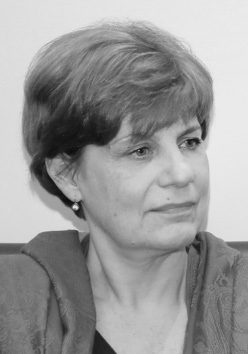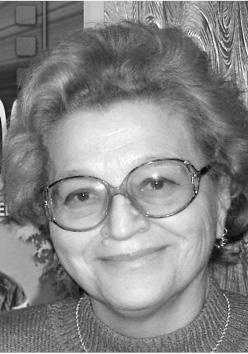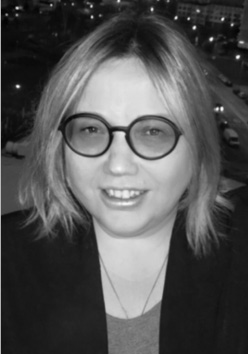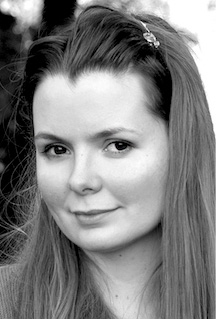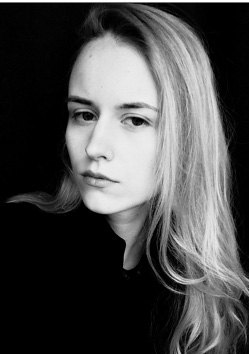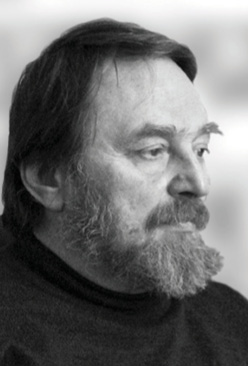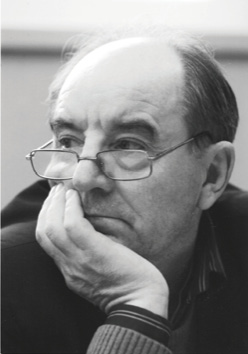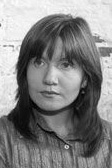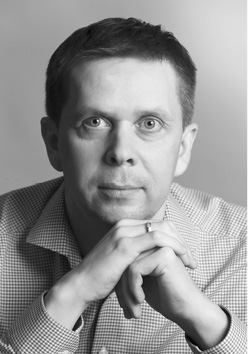Vol 12, No 1 (2020)
- Year: 2020
- Articles: 16
- URL: https://journals.eco-vector.com/2074-0832/issue/view/1160
- DOI: https://doi.org/10.17816/VGIK121
Full Issue
CHRONICLE IN DETAIL | CURRENT EVENTS
Cinema of the XXI century: youth forum
 6
6


THEORY AND HISTORY OF CINEMA | AUDIOVISUAL ARTS
The struggle for the Far East in the interpretation of the Vasilyev brothers
Abstract
The article analyzes the film “The Defense of Volotchayevsk” (1937) by the Vasilyev brothers as an example of totalitarian cinema. The Vasilievs wrote about their method as an approach to socialist realism and characterized their style as “maximum expressiveness with maximum simplicity”. The appeal to the struggle for the Far East was dictated by ideological goals: to form the identity of Soviet people and prepare them for a future war. The growth of socio-political tension in the Far East in the late 1930s made the Vasilievs create such a film which according to their own statements, was supposed to evoke “hatred for the enemy”, call upon “all Soviet people to rally even more closely around their government, the Communist party, and its leader, Comrade Joseph Stalin”. The masses were actively involved in the creation of the movie.
Reserving “the right to interpret these events from the viewpoint that seems to us the most correct”, the directors, while indicating the historical fact in the title, distorted the facts. Although the filmmakers proclaimed that they had used the evidence of the participants of the events in the script, they deliberately made the characters abstract representatives of social groups. The main efforts were aimed at creating the image of the enemy, the Japanese colonel Ushijima (L. Sverdlin). All the storylines and actions of the characters were determined by the party policy of the late 1930s and had a didactic meaning. Creating an ideological product for the masses, the authors focused on folklore aesthetics.
 8-20
8-20


Stopover? Non-fiction movies in the first decade after the millennium
Abstract
The article presents new conditions for the production of national documentary movies at the beginning of 21st century, as well as the creative atmosphere and style searches of filmmakers in the field of studying the inner world of our contemporary. The traditional film portrait of a documentary hero used to present them as part of a holistic public space and therefore the relationship between an individual and the society was the key issue in the documentary of previous decades. New times have primarily focused on the private space of a particular person, distanced from the help of or confrontation with the society. The conflict between good and evil unfolds on the material of the individual’s independent choice. The form of relations between the filmmaker and the hero changes, instead of the traditional observation, a dialogue of peers appears, giving rise to new forms of stylistic and genre solutions. The article offers a wide panorama of thematic searches for a documentary portrait, as well as a study of style innovations: manifestation, construction, composition, docudrama. Among the movies revealing the new artistic moves of documentary filmmakers of the first decade of the 21st century: “Mother” by P.Kostomarov and A.Katten, “Last Bow. Victor Astafiev” by M. Litvyakov, “Sister” and “Lisa” by P.Fattakhutdinov, “G.Zhzhenov. Russian Cross” by S.Miroshnichenko, “War and Peace of Colonel Kersky” by M.Rezvushkina and others.
 21-32
21-32


FILM LANGUAGE AND TIME | IMAGE GENESIS
Historical time and the image of the house in A. Sokurov’s work
Abstract
Historical time is one of the key categories of artistic time in Sokurov’s work is investigated in this article. The focus is on the complexity and versatility of historical time as the basis for creating an artistic image. The author is interested in the very method of representing the category of historical time directly in the structure and substance of films.
The main goal of the work is to identify the ways of representing empirical time characteristic of the director in fiction and non-fiction films. The author strives for studying Sokurov’s films in terms of his treatment of history and historical figures. The article analyzes the expressive means allowing the director to convey historical time in the picture. From the very start, the specific character of Sokurov’s portrayal of the time atmosphere and spirit through the creation of a special life space for the main characters of his films - a house, hometown, landscape, road and even the metaphysical space of historical memory, filled with symbols of a particular era - is revealed. It is this complex discursive space of the hero’s life that becomes the main way of representing historical time in Sokurov’s films.
The author of the article dwells on details on “The Moscow Elegy” documentary devoted to A.Tarkovsky’s life abroad. Such a view makes it possible to find out the ways of representing historical time through creating a complex space embodied in the image of Tarkovsky’s house (almost all director’s apartments and houses related to his life) and now deserted without the owner.
This research allows us to identify an important aspect in Sokurov’s cinema, the director pays exceptional attention to, i.e. the connection of historical time and the space of a person’s life as the reflection of his inner world, the life of a human soul, their constant interaction and mutual influence.
 34-44
34-44


Russian Сinema: Modest Charm of a Hollow Character?
Abstract
The article explores the “hollow character|” concept. The hollow character is manifested as a subject whose inner space does not exist. They are incapable of reflection or self-reflection. This character is essentially impervious to external reality. They do not relate themselves either to society or to history. Their temporal construction is poor. With no past or future, they live a moment of the present, sharply reacting to any touch. The article shows that introducing hollow characters into a movie plot correlates with neo-sentimentalism in contemporary art.
It is through the emotion of pity, especially self-pity, that the viewer is connected to the emotional system of films with a “hollow character”.
The lack of a certain substance and freedom from guilt guarantee the absence of the distinction between the viewer and the character.
The «hollow character» has neither inner or outer reality. The spatial form of the film is reduced to the interaction of the characters, which are empty shells capable of feeling pain and suffering from friction against external reality and when in contact with each other. Therefore, the border of the character with the outside world acquires special significance. This border is their body.
The article provides a sequential, spatial and temporal analysis of the films “Going Vertical” (2017, dir. Anton Megerdichev), “Dylda” (2019, dir. Kantemira Balagova), “Odessa” (2019, dir. Valeria Todorovsky), “The Man Who Surprised Everyone ”(2018, dir. Natasha Merkulova and Alexey Chupova).
The proximity of these films to the aesthetics of neo-sentimentalism is shown. Their stories unfold as a drama of pure physicality. The approach of another character promises not only warmth, but also the horror of a complete merger, bringing death. A “hollow character” eliminates the difference between polysemantism and nonsense. This is their seductive role: emptiness may seem meaningful.
 45-60
45-60


PERFORMANCE | ART OF PRESENTATION
Modern Social Problems in the Works of Novice Documentary Filmmakers
Abstract
The article highlights the significance of the topic of social problems among young documentary filmmakers represented at the VGIK International Student Film Festival. The author analyzes the visual and sound techniques used and reveals the interdisciplinary approach to creating an auteur documentary film.
Young documentary filmmakers cannot stay away from the challenges posed by the global problems of modern humanity. In their works, they strive to reflect the most crucial social problems associated with ecology: environmental pollution, climate change, poverty and preserving the authenticity of small ethnic groups. For instance, the documentary film “Pirana” (12 min. Director Nainisha Dedhia, National Institute of Design, India) shows endless dumps leading to environmental disaster. The documentary “Dulhaji Dolena” (28 min. Director Anita Reza Zein, Indonesian Institute of the Arts Yogyakarta, Indonesia) presents human life in the context of an unresolved environmental problem: the constant threat of flooding the village and its dwellings. Another example is the film “The End of Eternity” (10 min. Director Pablo Radice University of Buenos Aires, Argentina) about the Amazonian community of Ese Echo, based in Palma Real, Peru. If there is no forest, there will be no life and there will be no Ese-Echo, either. Ese-Echo is a language on the verge of extinction.
Hence, the importance of social problems is highlighted in the above-mentioned films. Despite the geographic remoteness of the filming areas, the filmmakers independently touch upon the pressing issues of modern mankind.
Involvement in such topics is gaining international significance. In general, the festival gives an idea of the most disturbing themes among young filmmakers, allowing us to single out the main trends in the development of modern cinema.
 62-73
62-73


Dramaturgy of the character of the tempter devil in the movie
Abstract
The article discusses dramatic techniques that contribute to the formation of the image of the seducer in the context of a film production. The seducer is usually a manipulator who provokes his victim and manipulates her personal needs and desire for forbidden pleasure. Such a character always plays on other people's weaknesses, as he has enough information to implement his manipulative strategies. To do this, the seducing manipulator uses a psychological or real mask, hiding his true face and intentions behind it. The image of the seducer in films is often correlated with the image of the devil, since the manipulator is the personification of evil, acting for his personal benefit with the help of lies and pretense. However, the visualization of the image in question is not always carried out in a classic mythological or religious manner, but can only be an intellectualized concept of evil. The external features of the seducing character become less significant than his behavioral characteristics. The game element in the image of the demonic seducer is the presence of a mask and the hidden intentions of the character who plays a manipulative game, pursuing his selfish goals. Such character types in most cases include scammers and swindlers, but the motive of seduction can be also realized through the anthropomorphic incarnation of the devil on the screen. An integral element of temptation is mystery. In fact, mystery is only the outline of the object of desire, its ideal image, which is drawn by the fantasy of the tempted person. A mystery can be an object of seduction, but it also lies in the image of a seducing protagonist. The image of the devil, in its turn, is portrayed in the dramatic structure of the film in a similar way, since such a character has a dual nature and hides his true face under a mask, which makes him shrouded in mystery.
 74-84
74-84


The emergence of a holistic artistic image
Abstract
This article is the third in a series of articles on composition in the visual arts (see “Composition as a Way of Communication in Teaching Visual Arts.” — M.: VGIK Bulletin, No. 4 (38). 2018. P. 69–76. And “Actual Problems of the Composition of the Artistic Image.”— M.: Bulletin of VGIK, No. 2 (40). 2019. P. 67—78). The article shows that, similar symbolic images may have a completely different semantic meaning depending on the viewer’s worldview and attitudes. If we turn to the previous articles of this series, we will see that this meaning also depends on the context, thereby possessing ambiguity that comes up to an internal semantic contradiction within a single detail. The article explores composition as a text, organized by complex interconnections of symbolic elements that form the integrity of the art form with its characteristic “super-sense” that goes beyond the sum of the meanings of the individual parts of the image. Here we can say that the true pictorial work involves the “invisible” which is not depicted on the canvas. Thereby, it is possible to convey not only what is visible with the bodily eyes in the composition, but also the spiritual content of the depicted. This article attempts to show that a student who is creating a composition, operates with signs, symbols, and even mythologemes, while working on a graphic text that needs to be organized in a holistic form. It completes the reasoning presented earlier in this series, and sums up the previous arguments. A holistic image cannot be decomposed, because in this case a pile of symbolic elements will lose its basic meaning. In conclusion, the article shows that any element of composition as a system can only be considered in conjunction with other elements, therefore there are immeasurably more informational interconnections than the elements themselves. Thus, the general information is by definition greater than that contained in the simple sum of its elements, which gives the perceiver the opportunity to form additional relationships and associations, a “super meaning” i. e. a new thought, new unexpected feelings, a new understanding of something that seemed long and well understood, giving rise to something akin to the “awakening” that suddenly dawns on a person.
 85-96
85-96


SCREEN CULTURE | CULTURAL STUDIES. PHILOSOPHY
Modern art history as a human science in a situation of cultural turn
Abstract
Intensive development of knowledge in the 20th century, including the emergence of new sciences and humanities, constantly creates a problematic situation in the sphere of art, shifting art’s designation to what in the philosophy of science is known as “normal science”. This is associated with the idea of art as a science that has reached a stage of maturity and consistency and, therefore, complies with its norms. The concept of art as “normal science” is characterized by a certain degree of conservatism, as it presupposes art’s self-protection against deviations from the established methodology.
However, sometimes the artistic processes of modernity require different approaches. In addition, the emergence of new humanities shifts the already established methodology of art. This happened in the first decades of the 20th century, in the era of a linguistic turn in the humanities, indicating the invasion of natural sciences in the humanities; and this is happening today, at the turn of the 21st century, in a situation of a cultural turn, the emergence and intensive development of the science of culture. The current turn requires a deeper understanding of the structure and components of art history, i.e., its sub-disciplines: art history, art theory and art criticism.
The essay argues that in the situation of cultural turn the theory of art can carry out functions which the other two sub-disciplines cannot. It propounds that art theory is able to make a decisive contribution to the elucidation of two problems: the relationship between art and cultural studies and the problem of historical time, which is important both for contemporary art and for art history.
 98-115
98-115


READING-ROOM | BOOK SHELF
 116
116


WORLD CINEMA | ANALYSIS
A screen version of the story of Salinger translated into Farsi
Abstract
The article analyzes the film Pari (1995) by the Iranian Director Dariush Mehrjui based on J.D.Salinger's book Franny and Zooey. The screen adaptation was made without Salinger’s authorization, so the film went on quietly, without much visibility at international events, including film festivals. Unlike many other Iranian films of that time, where a woman's freedom is assumed as an achievement, the film Pari shows a female character who perceives her freedom as a given. But freedom turns out to be a burden for her, resulting in a deep existential soul-searching crisis. The problem of the interaction of a highly gifted personality with the world of the ordinary people found in Salinger’s prose, proved to be relevant for Iran of the 1990s.
In the film Pari, Mehrjui introduced fundamentally new characters for Iranian cinema of the 1990s. On the one hand, there was an emancipated and independent intellectual woman, on the other, a full-hearted and secure intellectual man who had been through the war.
Iranian films of the Shah period typically portrayed intellectuals as unpractical and hysterical members of society. In his film Pari, Mehrjui creates an image of intellectuals the audience can connect with. Compared to Salinger, he is far less judgmental and critical towards the ordinary people who he sees as complex individuals not perfectly consistent in everything they do in live. Despite the obvious differences in the characters’ world outlooks and in the social conditions around them, Salinger and Mehrjui come to the same conclusion: one should always follow their heart and try to find fulfillment in their lives.
It proves to be a pattern that screen adaptations set in Iran but based on the works of Western authors acquire political implications and reflect the currents and attitudes of society, as well as its ideological and political trends.
 118-127
118-127


TELEVISION | DIGITAL ENVIRONMENT
Transmedia Storytelling: A Feature of the Digital Media World
Abstract
The process of convergence/deconvergence in media-communication industry introduce new concepts and methods in content production. Recently researchers and practitioners’ interest has been drawn to the idea of transmedia storytelling, developed by Henry Jenkins. Russian authors’ works are based mostly on foreign sources offering the ways of putting this innovative technology into practical use predominantly in the field of journalism and marketing. The purpose of our research is to consider the benefits of transmedia storytelling in the production of television drama series.
On the production side, transmedia storytelling presumes planning of the global series narrative with the perspective to distribute it piece by piece on multiple media platforms. Ideally this conception expects every medium to do what it does best. It is vital to choose transmedia extensions which best suit for rendering of the particular story to support the branded narrative universe, fill the intervals between the seasons, maintain the target audience interest and supply new information about the characters. This is achieved by such means as viral marketing and advertising, graphic novels/comic books, applications for mobile devices, web-pages, computer games, online games, alternative reality games, role games, etc. One of the producer’s main tasks is not only to attract as big audience as possible, but also to immerse it in the common experience of a drama series. The clash between the television series fiction and reality of the people’s living world guarantees a lasting connection with the content.
In conclusion it should be underlined that feature films and drama serials still provide symbolic material which helps the public to exist in their sociocultural contexts. Transmedia storytelling makes researchers to look for new more complex methods of media content and audience analysis.
 130-140
130-140


Techniques for compositional filling the space of a television frame
Abstract
Aiming at exploring the figurative structure of the screen space the author of the publication considers the functional interrelation of the composition’s visual elements in the pattern of a television shot. The formation of the modern communicative space with its inherent specific approaches to visual addition and information saturation of an editing phrase in the expressive model of a television product emphasizes the relevance of the topic under discussion as the artistic techniques unacceptable at the end of the last century have become very significant now.
The basic research principle of the screen space of a television shot is the combination of theoretical and empirical methods, in particular, general and specific: informational, theoretic, problematic, logical and artistic. At the same time, the academic approach is defined by observation and modeling making it possible to reveal the properties of the integration structure of a TV screen by providing audiovisual information in the mode of recording or love broadcast.
The article dwells on the architectonics of a shot’s narrative structure in terms of the necessary design style of the television screen’s figurative space. Its visual model is considered as an unconventional compositional filling of a shot: with a vertically built portrait of the correspondent during stand-up or an image disproportional to the frame of a television receiver or video monitor. The extensive role of additional visual elements in the form of various lines, color strips, copies of parts of the video image, graphics as well as the split screen providing a steady position of the main image in screen space of a television shot is revealed. At the same time, the problem of its visual design as the process of the original formation of screen space by means of modern creative receptions is being solved.
In the conclusion the intermediate results of the research regarding the additional compositional filling of a shot are summed up, theoretical conclusions are drawn, the prospects of further studying of the existential model of television footage are outlined while special attention is paid to the generalization of the gained theoretical knowledge for the subsequent practices of the embodiment of real objects on the displaying surface.
 141-150
141-150


ЧИТАЛЬНЫЙ ЗАЛ | КНИЖНАЯ ПОЛКА
L
 151
151


SUMMARY | PRESENTATION OF AUTHORS
 152-157
152-157


RECOMMENDATIONS AUTHORS
Recommendations to authors
 158-160
158-160











